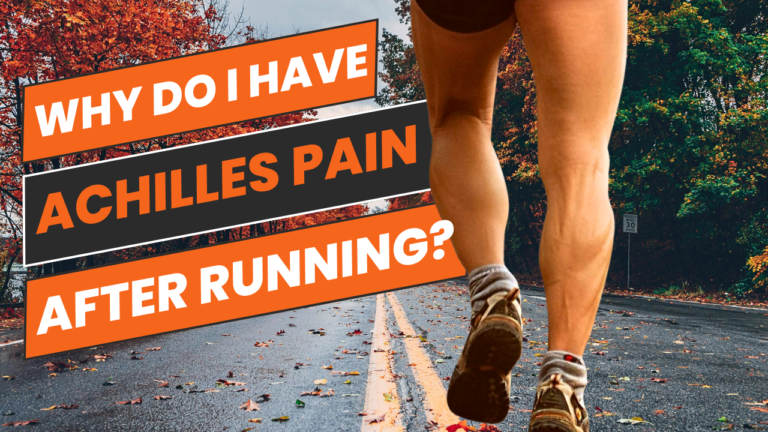You’re out for a run, feeling great, and then suddenly you feel a sharp pain in the back of your leg. You’ve had a pulled hamstring. Now what? First, don’t panic. Hamstring injuries are common, especially among runners, and they can be frustrating because they can take a while to heal. But with a bit of patience and care, you will be back on the road in no time.
Table of Contents
How do you know if your hamstring is pulled?
Hamstring injuries are unfortunately all too common, especially among athletes who participate in sports that involve a lot of running, thereby being more at risk for running injuries. But even if you’re not a professional athlete, you can still be at risk for a hamstring strain or tear. So how do you know if you’ve pulled your hamstring? There are a few tell-tale signs. First, you’ll probably feel a sudden, sharp pain in the back of your thigh.
This is usually followed by swelling and bruising. You may also have difficulty walking or moving your leg. If you suspect that you’ve pulled your hamstring, it’s essential to see a doctor. There are several effective treatment options available, but the sooner you start treatment, the better your chances are for a full recovery.

What are the causes of hamstring injuries?
Several factors can contribute to a hamstring injury, including muscle weakness, tightness or fatigue, and inadequate warm-up or stretching. But by far, the most common cause is overuse. This can happen when you suddenly increase the intensity or duration of your workouts or try to do too much too soon. Other causes can include sudden changes in direction or speed, running on uneven surfaces, and improper form.
What’s the difference between a pulled hamstring and a torn hamstring?
A pulled hamstring injury is a common injury that can occur in athletes. There are two types of hamstring injuries: a pulled hamstring and a torn hamstring. A pulled hamstring is a strain or mild tear of the hamstring muscle. A torn hamstring is a more severe tear of the muscle.
Symptoms of a pulled hamstring include pain, swelling, and tenderness in the back of the thigh. Symptoms of a torn hamstring include severe pain, swelling, bruising, and muscle weakness.
How do you treat a pulled hamstring?
Depending on the severity of the running injury, treatment may range from simple at-home care to more invasive procedures. For minor strains, ice and rest are typically all that is needed to promote healing. But here are the recommended treatments:
Ice
The application of ice to the affected area reduces swelling and inflammation. Wrap an ice pack in a towel and place it on the back of your thigh for 15-20 minutes, 3-4 times a day.
Stretching
Stretching is an integral part of the healing process, as it helps to lengthen and strengthen the muscles. Hamstring stretches should be done slowly and gently. Hold each stretch for 30 seconds.
Strengthening
Once the pain and swelling have gone down, you can start to focus on strengthening the hamstring muscle. This can be done with simple exercises like leg lifts and hamstring curls.
Massage
Massage can help to increase blood flow and reduce inflammation. It can also help break up scar tissue.
Surgery
In some cases, surgery may be necessary to repair a torn hamstring. This is typically only recommended for severe injuries.
Recovery times vary depending on the severity of the injury, but most people can expect to be fully recovered within 4-6 weeks.
What are the risk factors for hamstring injuries?
Several factors can increase your risk of developing a hamstring injury, including:
Age
As you get older, your muscles become less elastic and more prone to injury. Muscle weakness: Weak muscles are more likely to be injured. Poor flexibility: If your hamstrings are tight, they’re more likely to be injured.
Previous injuries
Once you’ve had a hamstring injury, you’re more likely to have another one.
Overuse
Doing too much too soon can lead to a hamstring injury.
How can you prevent hamstring injuries?
Warming up
Always warm up before exercising or playing sports. A good warm-up will increase blood flow and flexibility and reduce the risk of injury.
Stretching
Be sure to stretch your hamstrings (and all of your other muscles) before exercising or playing sports. This will help reduce the risk of injury and increase flexibility.
Strength training
Strong muscles are less likely to be injured. Focus on strengthening all of the muscles in your legs, including your hamstrings.
Cross-training
Varying your workout routine can help to reduce the risk of overuse injuries.
Wearing proper footwear
Wearing running shoes that fit well and provide adequate support can help to reduce the risk of injury.
If you experience a hamstring injury, seek medical attention as soon as possible. Early diagnosis and treatment are essential for a speedy recovery.
When should you see a doctor?
If you experience severe pain, swelling, bruising, or muscle weakness, it’s essential to see a doctor. These could be signs of a more severe injury like a torn hamstring. A doctor can also help to rule out other possible causes of your pain, such as a hernia.
What is the best exercise for a pulled hamstring?
Hamstring strains are one of the most common injuries in athletes and non-athletes. A hamstring is a group of three muscles that runs down the back of the thigh. These muscles are responsible for bending the knee and extending the hip. Whenever there is an overstretching and tearing of one or more muscles, a hamstring strain occurs.
There are a variety of exercises that can help rehabilitate a pulled hamstring, but the two most important are the straight-leg raise and the bent-leg raise.
The straight-leg raise is an exercise that is performed lying on your back with your leg straight. You slowly lift your leg until it is parallel to the ground and lower it down.
The bent-leg raise is similar to the straight-leg raise, but instead of keeping your leg straight, you bend your knee and pull your heel up towards your butt.
These two exercises are important because they help strengthen the muscles in the hamstring and prevent future injuries. If you have a hamstring strain, it is essential to consult with a physician or physical therapist before beginning any exercises.
FAQ – Hamstring Injuries
Is walking good for a hamstring injury?
Walking is a great way to stay active when you have a hamstring injury. It’s low impact so it won’t aggravate your injury, and it will help keep your muscles strong and healthy. Of course, you need to be careful not to overdo it.
If you start to feel pain, STOP. Walking is also an excellent way to prevent future injuries. A regular walking routine will help increase flexibility and range of motion in your hamstrings, which can help prevent injuries. So, get out there and start walking! Your hamstrings will thank you.
Is it OK to run with hamstring pain?
I’m no doctor, but in my experience, it’s never OK to run with pain. Hamstring pain, in particular, can be tricky because it’s easy to make things worse by pushing through the pain. The risk isn’t worth it. If you’re dealing with hamstring pain, my advice is to take a few days off from running to let your body recover.
Then, focus on other forms of exercise, like swimming or biking, that don’t put as much strain on your hamstrings. And if the pain persists, be sure to see a doctor or physical therapist to get to the bottom of the issue. In the meantime, err on the side of caution and don’t run until the pain is gone.
Should I ice or heat a pulled hamstring?
If you’ve suffered a hamstring injury, you may be wondering whether to ice or heat the area. Unfortunately, there’s no easy answer – it depends on the stage of healing your body is at. In the early stages of healing, it’s essential to reduce inflammation and swelling, so icing the area is generally recommended. This can relieve pain and reduce inflammation. However, as the injury starts to heal, heat can be more helpful in easing stiffness and promoting blood flow to the area.
Should I foam roller sore hamstring?
Foam rolling is a great way to massage and stretch your muscles, and it can be beneficial if you’re dealing with a hamstring injury. Foam rolling helps release tension in the muscles and promotes blood flow to the area. This can help reduce pain and stiffness, and it can also help prevent future injuries.
How should I sleep with a pulled hamstring?
The best way to sleep with a pulled hamstring is to elevate your leg. In this way, swelling and pain can be reduced. You can also place a pillow under your knee to keep your leg comfortable. Sleeping on your back or side is generally recommended, as this will help prevent further strain on your injured hamstring.
Conclusion
In conclusion, I would like to say that if you are experiencing any of the symptoms related to a pulled hamstring, it is essential to seek medical attention right away. While some cases may be able to heal without surgery or other treatments, there is always the risk of further damage and a longer healing process if the injury is not treated correctly.
I hope my experience can serve as an example for others who may find themselves in a similar situation. To find out about another common running injury, please visit my posts such as Stress Fracture and Treatment and Knee Pain After Running.





Excellent blog here Also your website loads up very fast What web host are you using Can I get your affiliate link to your host I wish my web site loaded up as quickly as yours lol